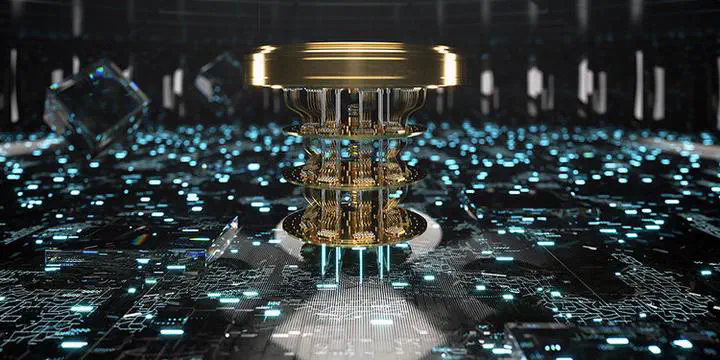Quantum Computing

Why do we want quantum computers?
Scientists and engineers anticipate that certain problems that are effectively impossible for conventional, classical computers to solve will be easy for quantum computers. Quantum computers are also expected to challenge current cryptography methods and to introduce new possibilities for completely private communication.
Quantum computers will help us learn about, model, and manipulate other quantum systems. That ability will improve our understanding of physics and will influence designs for things that are engineered at scales where quantum mechanics plays a role, such as computer chips, communication devices, energy technologies, scientific instruments, sensors, clocks, and materials.
Just as people could envision few of today’s uses of classical computers and related technologies back in the 1950s, we may be surprised by the applications that emerge for quantum computers.
How does a quantum computer work?
Quantum computers share some properties with classical ones. For example, both types of computers usually have chips, circuits, and logic gates. Their operations are directed by algorithms (essentially sequential instructions), and they use a binary code of ones and zeros to represent information.
Both types of computers use physical objects to encode those ones and zeros. In classical computers, these objects encode bits (binary digits) in two states—e.g., a current is on or off, a magnet points up or down.
Quantum computers use quantum bits, or qubits, which process information very differently. While classical bits always represent either one or zero, a qubit can be in a superposition of one and zero simultaneously until its state is measured.
In addition, the states of multiple qubits can be entangled, meaning that they are linked quantum mechanically to each other. Superposition and entanglement give quantum computers capabilities unknown to classical computing.
Qubits can be made by manipulating atoms, electrically charged atoms called ions, or electrons, or by nanoengineering so-called artificial atoms, such as circuits of superconducting qubits, using a printing method called lithography.
Do quantum computers exist?
Nascent quantum computers have existed in various forms for more than a decade. Several technology companies already have working quantum computers and make them available together with related programming languages and software development resources.
The technology with the broadest potential uses, in which quantum gates control qubits through logical operations, is in fast-moving, early development. Today, computers of this type generally have fewer than 100 qubits. The qubits are kept in a quantum state inside nested chambers that chill them to near absolute zero temperature and shield them from magnetic and electric interference.
This technology reached a milestone in 2019, when a quantum computer completed a specific calculation in a sliver of the time a classical supercomputer would have needed to solve the same problem. The feat is considered a proof of principle; the use of this type of quantum computer to solve practical problems is expected to be years away.
A different approach to quantum computing, called quantum annealing, is further along in development but limited to a specific kind of calculation. In this approach, a quantum computer housed in a cryogenic refrigerator uses thousands of qubits to quickly approximate the best solutions to complex problems. The approach is limited to mathematical problems called binary optimization problems, which have many variables and possible solutions. Some companies and agencies have purchased this type of computer or rent time on new models to address problems related to scheduling, design, logistics, and materials discovery.
When will broadly useful quantum computers be available?
It may be years before general-purpose quantum computers can be applied to a variety of practical problems. To do useful work, they probably will require thousands of qubits. Scaling up brings challenges.
Large numbers of qubits are harder to isolate, and if they interact with molecules or magnetic fields in their environment, they collapse or decohere, losing the essential but fragile properties of superposition and entanglement. The more qubits there are, the more likely the machine is to make errors as individual qubits are disturbed by the environment.
Theorists and experimentalists develop strategies to reduce errors, lengthen the time that qubits can stay in quantum states, and increase the system’s fault tolerance, preserving its accuracy even in the presence of errors.
Researchers are inventing new designs for qubits and quantum computers and enhancing existing technology. Established and newer strategies will take time to scale up, increase in reliability, and demonstrate their potential.
How has Caltech influenced quantum computing?
From its beginnings, the field of quantum computing has been shaped by Caltech. Breakthroughs have come from alumni and current Caltech scientists and engineers, some of whom are affiliated with Caltech centers such as the Institute for Quantum Information and Matter and its precursors; the Kavli Nanoscience Institute; the new AWS Center for Quantum Computing; and JPL, a NASA laboratory managed by Caltech. Working together across engineering and science and with colleagues worldwide, these researchers have
- forecast quantum-mechanical devices in 1959 and quantum computers in 1981;
- performed the first experiment realizing quantum teleportation, which can transmit information over great distances;
- created Shor’s algorithm, which showed that quantum computers have potential to solve problems that classical computers cannot;
- stored entangled quantum states in a memory device for the first time;
- conceptualized a method for correcting errors by drawing on entanglement to protect information from disturbances in the local environment;
- theorized materials that can physically encode and protect information; and
- developed methods to verify that quantum computers are calculating correctly.